Island Fever
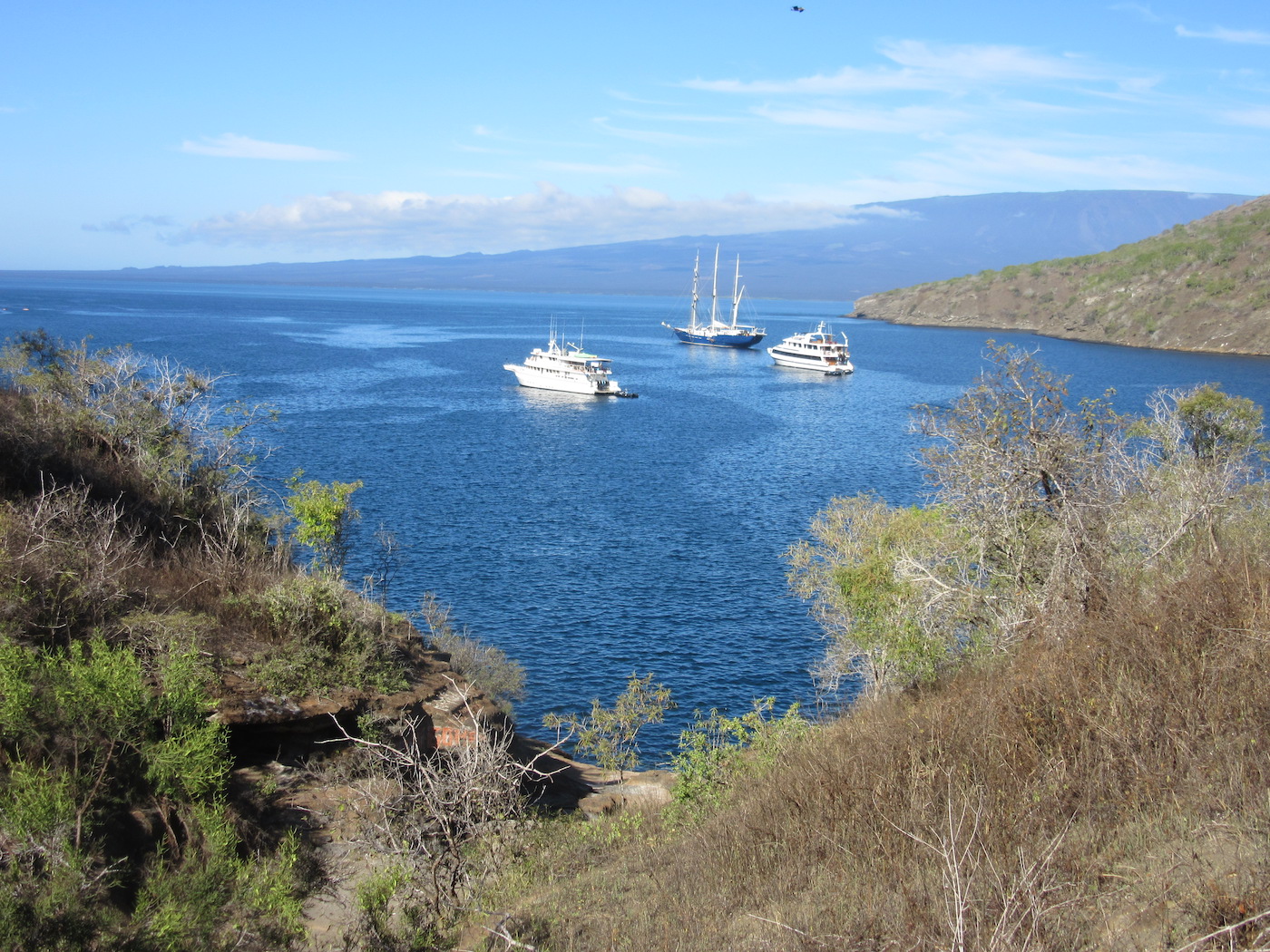
Six-hundred miles due west of Ecuador lie the Galapagos Islands. Born of volcanic fire and lava that broke through faults in the earth’s crust on the ocean floor, the magma rose to form underwater mountains and some of the mountain tips emerged forming islands, which continues to this day. It is estimated that this archipelago of 13 large islands, six smaller, and about 40 islets and rocks were formed about 4 million years ago, quite recent when one considers that the Hawaiian Islands formed in a similar manner about 20 million years ago.
When our plane from Quito Ecuador touched down on the island of Baltra, I was indeed surprised to find the land looking desert-like with cactus, brushwood, and fields of lava rock that came right up to the sea. Similarly, when Darwin touched land here in 1835 at age 26, he wrote in his journal while sailing on the HMS Beagle, “Nothing could be less inviting than the first impression of appearance.” But in fact, after a bit more exploration, he and now us had found a little world unto itself where the first appearance of new organisms occurred. These islands are of purely “oceanic” origin, meaning there was never a land bridge to a mainland, so no mammals ever existed here (until man introduced rodents and domestic mammals) and never any large predators.
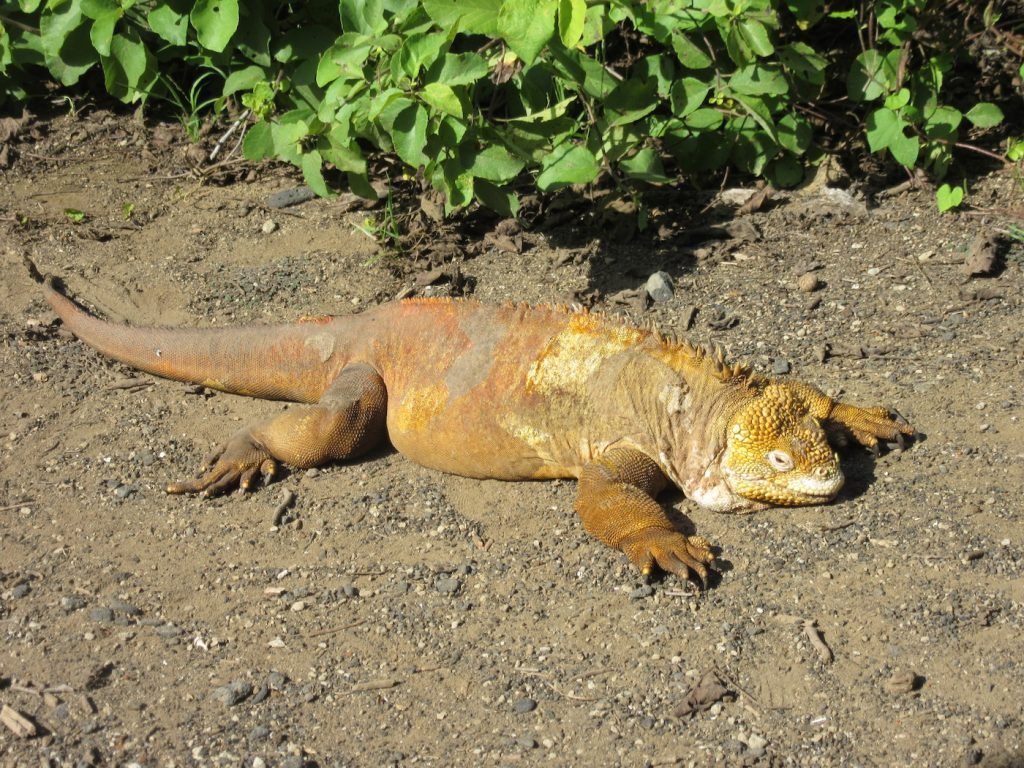
We were soon to find these islands held many endemic species – a species living and evolving in a specific place found nowhere else on Earth. But what makes all these animals even more special is their unusual tameness and unconcern when we humans approached them. The innocence is built into their DNA, as few if any threats ever existed on these islands.
A short distance from the airport, Sue & I boarded a 90-foot yacht with four other couples occupying five state rooms and enjoyed fine meals and travel service plus guide for our nine days touring by sea. The only way to really see the Galapagos Islands is by boat, plus the use of a small landing craft to land on the beach shores. So, if one is prone to seasickness, proper measures must be taken – e.g., “the patch”, Dramamine, or positive thinking. We did disembark onto some of the inhabited islands (there are actually about 30,000 occupants on the islands) but, most of our landings were onto empty beaches.
We all know the Galapagos Islands are south of us, but they are located more easterly than one realizes, they are on the same longitude as Missouri, two-time zones away. And, even though the Islands are on the equator, the climate is subtropical due to the various ocean currents which create a microclimate of warm but fairly dry weather. Trade winds that carry clouds to this open and empty part of the Pacific are “caught” by the volcanic island peaks delivering dew and rain to vegetation near the inland parts of the islands, which become more tropical-looking inland and also support more birds, animals, and the human inhabitants on some of the larger islands.
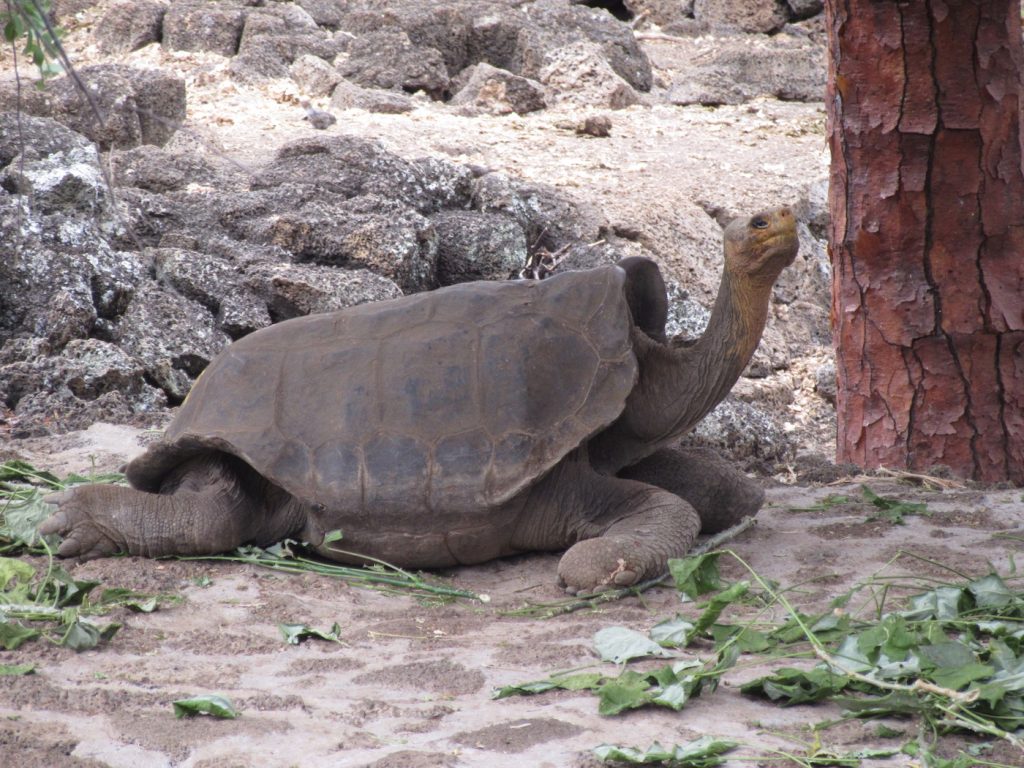
This precious moisture finds its way to low spots forming ponds, water holes, and also the wallows used by the famous Giant Galapagos Tortoise. These lumbering magnificent creatures lounge and cool themselves in ponds, and it is common to see six to 12 each spread out in the shallows or sunk deep in the cool mud. These ancient reptiles can live to more than 150 years packing weight of up to 400 pounds, and slow but steady they can travel three miles per day. Their eggs are laid in clutches of six to 20, buried in a sandy depression, and those few hatchlings that mature to 25 pounds are normally safe from bird and rodent predators. Even so, the Darwin Giant Tortoise Preserve & Research Center helps the natural process by incubating some eggs and nursing along the propagation process, reintroducing about 100 tortoises per year since 1970 to some of the islands. We saw plenty of them at the center and in the wilds.
Parts of the largest island of Isabela are especially dramatic in their volcanic upheaval, as our small skiff took us to an untouched black lava shore and our closed-toe shoes crunch on the rough gravel. We passed tide pools teaming with crabs the size of grapefruit with colors that would delight any artist, the “Sally-lightfoot” crab with their rainbow-colored shells of red, blue, yellow, and lavender.
As we walked inland, a formative volcano loomed quietly in the distance as we gazed over a maze of lava fields with endless patterns, crags, crevices, and calderas. The desolate stark beauty of volcanic residue gives rise to muted patches of green, hardy vegetation that planted seeds among the cracks soaking up water and nutrients that come its way. Our explorative path took us to ravines where sea water has mingled with the rain water forming turquoise ponds of brackish water and, like an oasis, held thriving life; attracting, small fish, aquatic plants, reptiles, shore birds, and surprisingly, a group of flamingos perfectly pink against the rough ebony background. Later, we saw them in flight making several passes over our heads before landing at another pond.
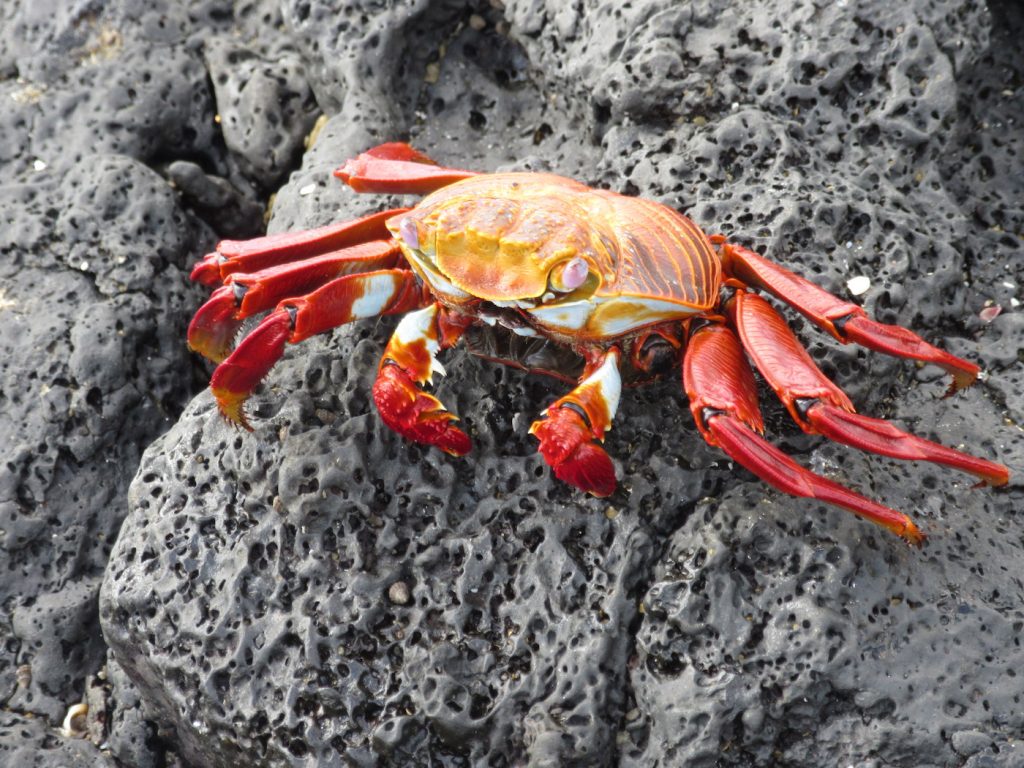
The constant rolling surf is never far from our ears and sent its moisture into the air as we returned to our craft for a short ride into a mangrove-lined lagoon with numerous protective shallow passageways. Soon we saw heads the size of a small fists popping up out of the water, as our guide pointed to the many green sea turtles surfacing for air before settling down beneath the surface. Our boat turned into a secluded cove, where literally dozens of sea turtles of various sizes and colors were feeding on plankton and cruising inches from our craft in a serene unconcerned manner. The misty shallow water helped provide another amazing sight, a group of golden stingrays in flight just under the surface reflecting Monet-like colors through the rippling water.
On another day, we anchored in a protected cove, donned our snorkel gear, entered the 68-degree water and approached the shear volcanic ash cliffs and rocks that provide habitat for tropical fish, sea turtles, and the Galapagos penguins, the farthest north location of any penguin. These chunky little packages of energy dive for fish, and it is quite a show to watch them jet around erratically underwater making 45-degree turns on a dime with their flightless wings. They seem out of place here, so far from the cold on Antarctica, yet this is their home and their behavior shows that. We watched them gathered together then take off to a new fishing spot like a pod of small dolphins porpoising through the water. We climbed back into our skiff and headed back to our mother ship, passing a pair of flightless cormorants common here spreading their wings to gather up the morning solar energy.
At another beach, we jumped from our skiff into the shallow surf and came ashore onto a salt-and-pepper sand beach, the coarse volcanic white ash and black lava now ground into small wet particles that sunk down with each foot step, ours being the only visible ones. We hiked a short distance into the interior in search of the Galapagos land Iguanas and came upon a stunning yellow iguana in the shadows of the vegetation, not far from the prickly pear cactus that is their main source of food and water. There before us was a fat, healthy 3-foot iguana, its crusty mustard-yellow skin gleaming in the sun, its creamed-colored eyelids closing so as to ignore us. We passed several others all in their varying patches of yellow and gray. We saw one streak quickly into the brush, knowing not why but we learned they can move fast.
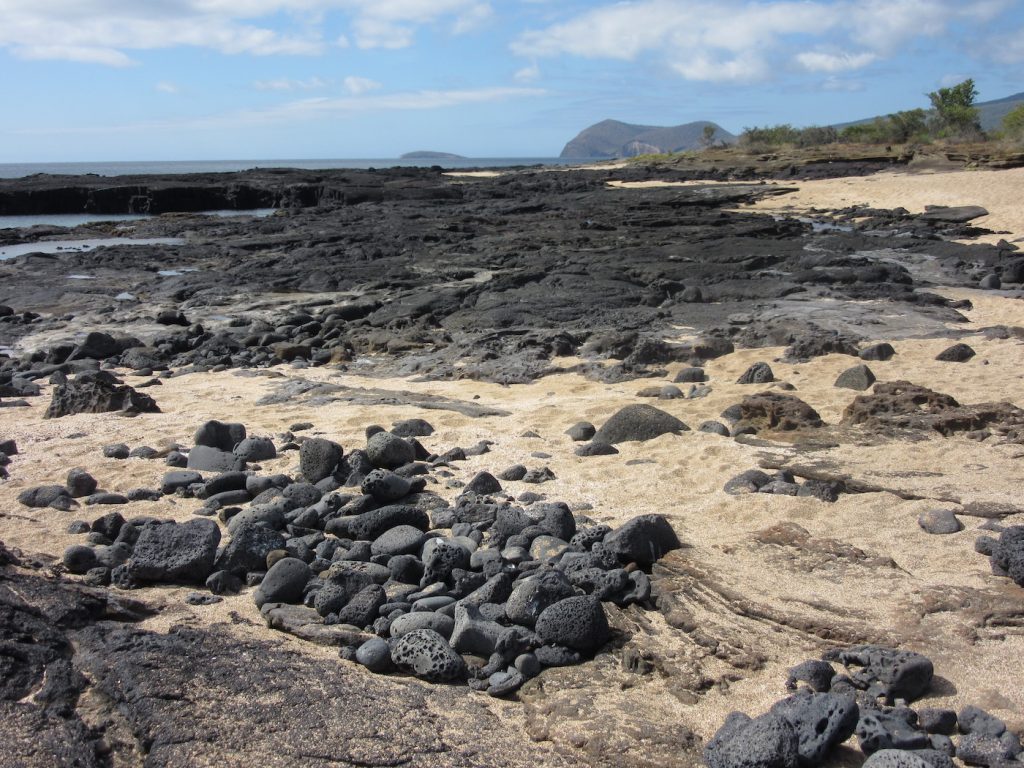
In the afternoon, we travelled to another shore stark with jagged outcroppings of the black basalt lava and there we beheld our first Galapagos Marine Iguanas. Think of a miniature Godzilla laying down with salt crystals on its head and you have the picture. These creatures seem to have no predators and are abundant, warming themselves on the many lava stone beaches by the hundreds. Once in the water, they graze on the algae that abundantly grows on the ocean’s rocking floor. We watched them while snorkeling close as they swam and then dove underwater tearing hungrily at the moss-like algae that seemed to be everywhere. Later in the afternoon as their feeding ebbed and the tide changed, dozens of these unique iguanas came swimming ashore, their heads creating small wakes like a fleet of periscopes coming to shore.
On our last hiking day, we were brought to the amazing Santiago Island, which had a seabird rookery teaming with so many fascinating birds at different levels of maturity it is hard to describe but, most remarkable was their tolerance and even nonchalance to our presence. We walked on carefully marked paths and came to within feet of nesting Blue-Footed Boobies – I mean, bright turquoise feet, frigate birds – some males with huge brilliant red-ballooned throats and also swallow-tailed gulls, complete with thick red “eye-liner.” Many of the birds were sitting on eggs in their nests or feeding their young hatchlings. Never have I gotten so close to a calm mother tending her nest. There were hundreds of birds in this rookery spread out over acres of the rocky and brushy lava mesa over-looking the Pacific.
This Galapagos trip was a world-class experience and it combined the right combination of adventure with luxury. There were so many things we saw and experienced that I simply cannot include them all; I did not even mention the three days touring around Quito Ecuador. You will just have to go yourself.
SOME INTERESTING POINTS
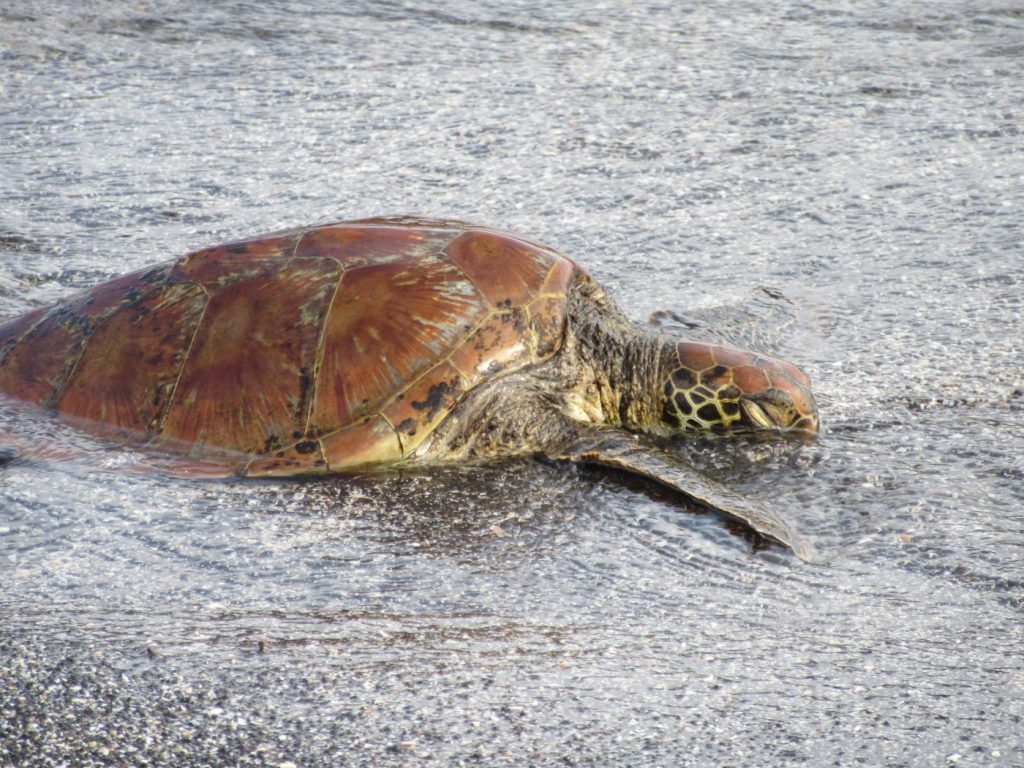
Discovery of the Galapagos – A Spanish priest administrator discovered the Galapagos Islands by accident in 1535, when his Panamanian sailing ship drifted off course. Legend has it that the priest’s stories fascinated others, especially ones about the saddleback-type tortoise shells that some of the species have and which reminded him of an ancient Spanish saddle, in Spanish, a Galapagos. The islands first appeared on nautical charts in 1570. Spanish, English, and pirate ships passed by here for decades, filling their holds with fresh turtle meat. Later Spanish arrivals named these islands Las Islas Encantadas or the Enchanted Islands, evoking a magical aura that truly surrounds them as they suddenly appear out of nowhere in the Pacific. From 1780-1860, British and American “whalers” visited these islands, including the USS Essex made famous by Herman Melville and Moby Dick. The HMS Beagle and Darwin visited in 1835. Ecuador declared the Galapagos a National Park in 1959 (a century after Darwin wrote The Origin of Species), officially naming it Archipelago de Cristóbal Colón, to commemorate Columbus’s discovery of the Americas, even though he never visited these islands. Most of the world knows the islands as the Galapagos.
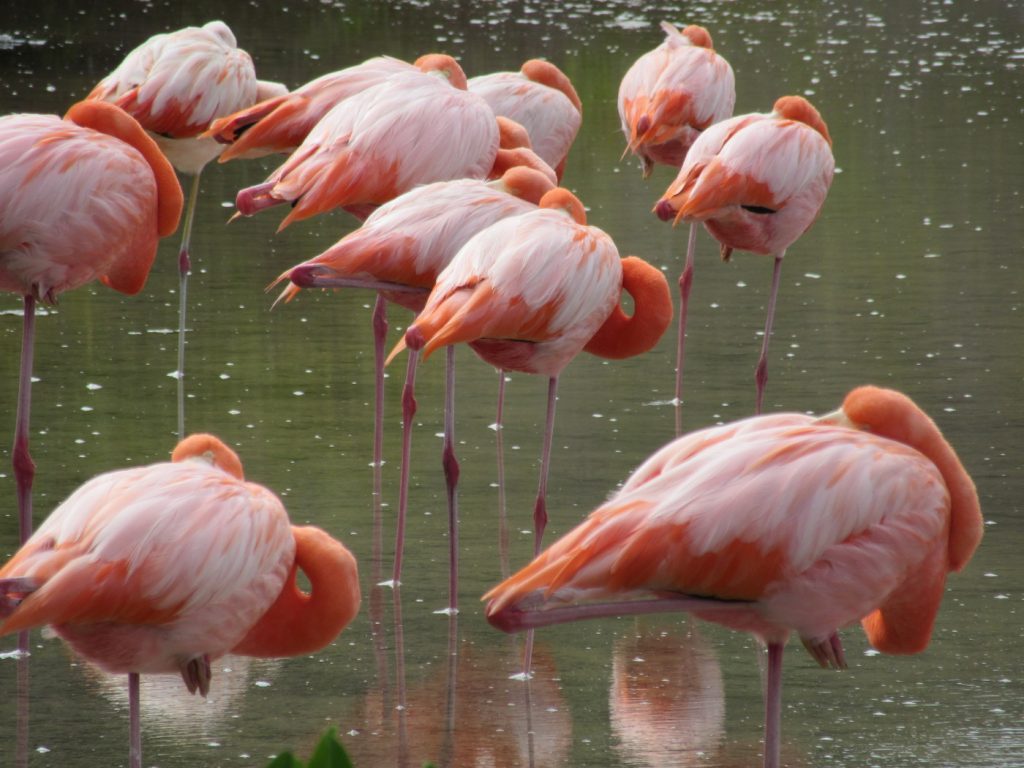
Evolution by way of a Beak – Darwin sailed with the Beagle on a five-year mission of discovery, spending about five weeks among the islands drawing astute observations. Later, he and others developed theories about the origin of species using observations such as the unique bird population of finches and mockingbirds on the various islands which, due to their relative isolation from one another, adapted to the unique island features by changing their characteristics and evolved into different species. Some would migrate to nearby islands and over time would establish separate species on their own island. As they adapted certain traits that allowed them to coexist better in the new environment, they were selected for reproducing, creating divergent characteristics and genes, and eventually differentiated into a new species.
“Hot Spot Theory” – Earth’s fiery creative process. In certain places, there are stationary intense areas of heat in the earth’s mantle that wax and wane in strength. These spots become, in essence, like a blowtorch and cause the mantle above it to melt and push up, allowing volcanos to form in the process. Slowly, over millions of years, the land and volcanos moved away from this Galapagos “hot spot” on the Nazca tectonic plate, which is moving Southeast. This process then repeats itself as a new volcano to the west starts to form above the hot G-spot like a conveyor belt. During this process ridges, valleys, and mountains form underwater; the mountain tops that break the surface become the islands we see today. The most recent eruption occurred in 2009 on the most westward uninhabited Fernandina Isle.
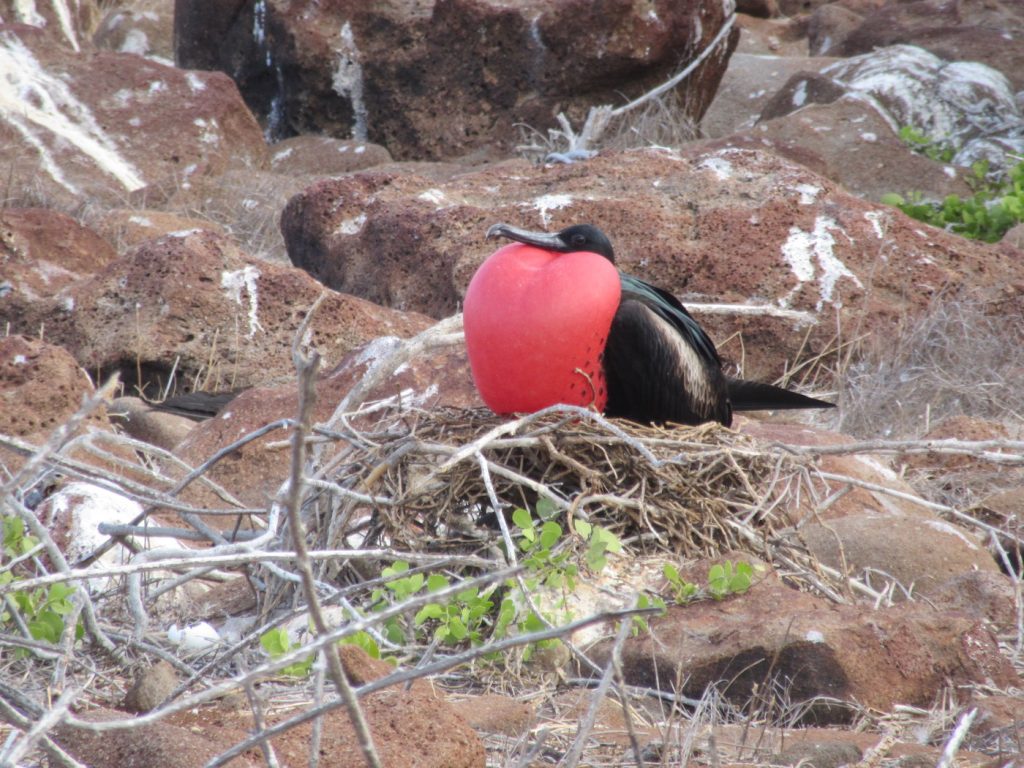
If You Go:
• The Galapagos Tour Company: OARS
• The Galapagos Boat: Reina Sylvia
• Airline: COPA (partners with United) upgrade to Extended leg room. LAX to UIO
• Hotel in Ecuador: Rincon De Puembo, in Quito area; very nice. (Ask for Fabricio)
• Tour Guide Company in Ecuador: Ecua Touring (ask for Amanda)
I discovered, once I was there, that sport fishing (not commercial) is permitted around the islands, as long as you use a permitted boat, which is easy to find. I wish I knew this beforehand, as there are some beautiful wahoo and tuna to catch down there!







You must be logged in to post a comment.